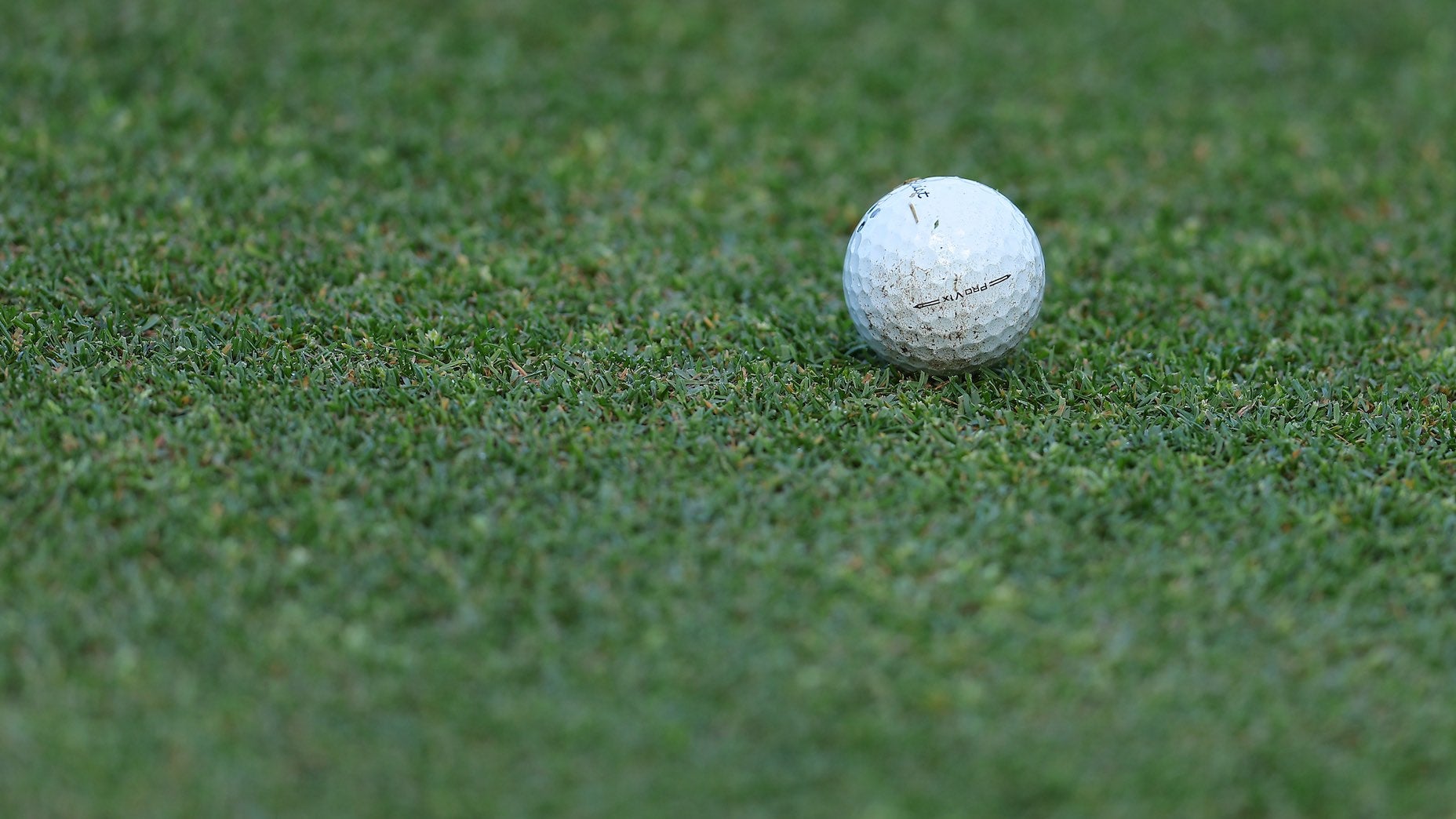
Curious if your golf ball is still up to snuff? Take a look at the cover.
Getty Images
Golfers these days have it really, really good. Club technology has never been better. Launch monitors can provide instantaneous feedback. And speaking of feedback, there are data-tracking apps that highlight the strengths and weaknesses of your game.
Something else that’s worth celebrating? Golf ball durability. During the days of balata pellets, it was commonplace to find a dime-sized scuff mark on the cover after a zippy wedge shot — on the first hole. Elastomer cover technology has come a long way since those days. For example, in 2019, Alex Chiarella scored a win at the Lethbridge Paradise Canyon Open (Mackenzie Tour) while using the same Titleist Pro V1x for all 72 holes.
Chiarella took 264 swings (and putts) with the ball that week — a number that most weekend golfers wouldn’t come close to attainting due to the occasional wayward shot that would render the ball permanently lost. In 2009, a GOLF Magazine study found avid golfers lose 1.3 golf balls per round, which adds up to 5.2 for 72 holes. Simply keeping a ball in play for that long isn’t going to happen unless you’re a scratch/pro golfer, striping it, receive some fortuitous bounces, or all of the above.
But let’s pretend for a second that you’re in the zone and can’t lose a golf ball. How long could you play the same ball? And what signs would tell you it’s time to make a change before performance dips?
All of our market picks are independently selected and curated by the editorial team.
If you buy a linked product,
GOLF.COM may earn a fee. Pricing may vary.
Golf balls
Check out Fairway Jockey’s extensive selection of golf balls from all the major manufacturers.
Unless you’re seeing something squirrely on a stock shot — like a significant change in direction or launch on a well-struck shot — it’s safe to play a ball for as long as you want, even if the paint on the cover starts come off.
Where you need to be concerned is when the paint loss starts to expand, likely due to a scuff mark.
“Our normal rule of thumb for regular golfers is as long as paint loss, a scuff or defacement of the golf ball is less than the size of a dime, it should be good to go,” said a Titleist representative.
In other words, general wear and tear won’t affect the cover all that much. It’s shots that “kiss” the cart path or ricochet off a tree that generally leads to more paint loss and an eventual dip in performance.
Titleist confirmed in 2019 that they’ve heard from weekend golfers who’ve played over 120 consecutive holes with the same ball, so it’s certainly possible to keep playing one ball without having to worry about it affecting your game. Just remember to keep an eye on the cover as the round progresses.
And one more thing: make sure you have enough balls in the bag to make it 18 holes. The average pro carries seven to 12 balls and prefers to put a few freshies in play during the course of a round. If you’re on the higher end of the handicap spectrum, make sure a full dozen is present and accounted before on the first tee.









